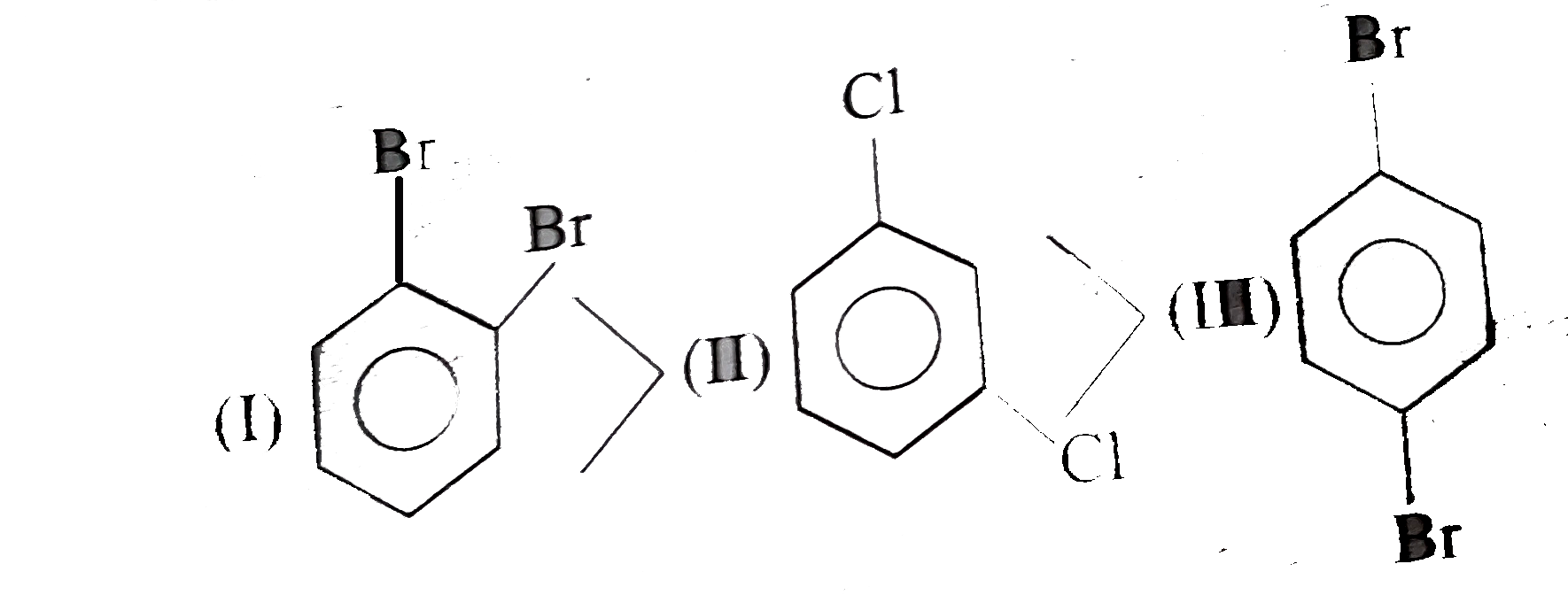Which of the following statements is correct?
If freshly formed precipitate of stannic oxide is peptized by a small amount hydrochloric acid, the sol carries a positive charge but if peptized by a small amount of sodium hydroxide, the sol carries a negative cahrge.
If a dilute solution of silver nitrate is added to a slight excess of a dilute solution of potassium iodide, a negatively charged sol of silver iodide is formed. But if a dilute solution of potassium iodide is added to a slight excess of dilute solution of silver nitrate, a positively charged sol of silver iodide is formed
If Fe Cl3 is added to excess of hot water, a positively charged sol of hydrated ferric oxide is formed by when ferric chloride is added to NaOH, a negatively charged sol is obtained.
All of these
The correct Answer is:D
When two or more ions are present in the disperison medium, preferential adsorption of the ion common to the colloidal particle usually takes place.
In the former case of stannic oxide, a small amount of stannic chloride, SnCl4 is formed and the positively charged Sn4+ ion is prefferred and sol is positively charge, In the latter cse, a small amount of sodium stanate, Na2SnO3 is preferred and accordingly the sol is negatively charged. The chloride and sodium ions known as counter ions, are directed towards the liquid phase.
When silver nitrate solution is added to a slight excess of postassium iodide solution, the precipitated silver iodide adsorbs iodide ions (present in excess) from the dispersion medium and negatively charged colloidal solution results. But when KI solution is added to a sight excess of AgNO3 solution, positively charged sol result due to adsorption of Ag ions (present in excess) from dispersion medium.
AgI/I−AgI/Ag+Negatively chargedPositively charged
However, if silver nitrate and sodium iodide are mixed in equivalent amounts, there is precipitation of silver iodide and no sol is formed due to absence of charges. Once again the ions preferred by colloidal particle are those which are common to them. Thus, in the former case, silver iodide prefers iodide ion and not sodium ion. Similarly in the latter case, it prefers silver ion and not nitrate ion.
The counter ion in each case is directed towards the liquid phase (dispersion medium).
If FeCl3 is added to excess of hot water, a positively charged sol of hydrated ferric oxide is formed due to adsorption of Fe3+ ions. But when ferric chloride is adde to NaOH, a negatively charged sol is obtained with adsorption of OH− ions.
FeO3.xH2O/Fe3+Positively charged,Fe2O3.xH2O/OH−Negatively charged
Topper's Solved these Questions
- SURFACE CHEMISTRYBook:R SHARMAChapter:SURFACE CHEMISTRYExercise:Follow-up Test 11
Explore 9 Videos
- SURFACE CHEMISTRYBook:R SHARMAChapter:SURFACE CHEMISTRYExercise:Follow-up Test 12
Explore 4 Videos
- SURFACE CHEMISTRYBook:R SHARMAChapter:SURFACE CHEMISTRYExercise:Follow-up Test 9
Explore 6 Videos
- STEREOCHEMISTRYBook:R SHARMAChapter:STEREOCHEMISTRYExercise:Archives
Explore 17 Videos
- THE D AND F BLOCK ELEMENTSBook:R SHARMAChapter:THE D AND F BLOCK ELEMENTSExercise:Archives
Explore 54 Videos
Similar Questions
Knowledge Check
Which of the following statement is correct?
AGoblet cells secrete pepsionogen.BParietal cells secrete hydrochloric acid.CArgentaffin cells secrete mucus.DChief cells secrete gastrin.Which of the following statement is correct ?
ADipole moment :
 BStability of free radical :
BStability of free radical :
 CBasic strength : CH3OӨ>ӨOH>RSӨDBasic and nucleophilic strength : IӨ>BrӨ>C1Ө>FӨ
CBasic strength : CH3OӨ>ӨOH>RSӨDBasic and nucleophilic strength : IӨ>BrӨ>C1Ө>FӨWhich of the following statement is correct?
AA σ bond is weaker than a π bondBThere are four coordinate bonds in the NH+4 ionCThe covalent bond is directional in natureDHF is less polar than HCl

